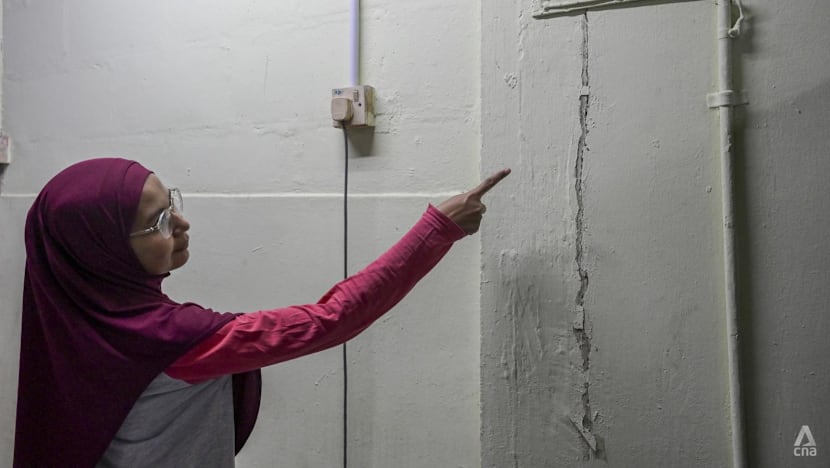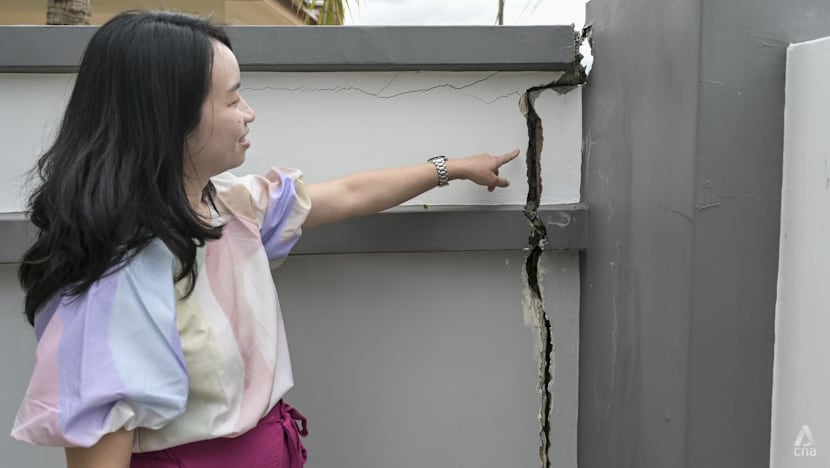Johor Bahru to review building safety standards in light of recent quakes
A 3.5 magnitude earthquake hit Batu Pahat on Saturday, the first in a month since a series of minor quakes struck other parts of Johor.

JOHOR BAHRU: Authorities in Johor Bahru will conduct a comprehensive study to reassess safety standards of existing buildings and review construction standards for new developments, following another earthquake in the southern Malaysian state last weekend.
The 3.5 magnitude earthquake in Batu Pahat on Saturday (Sep 27) was the first in a month since a series of minor quakes struck other parts of Johor in late August, with magnitudes from 2.5 to 4.1.
While the quakes have been relatively mild, residents in several Johor districts including Segamat, Yong Peng and Kluang had previously reported feeling the ground shake.
“As the local authority responsible for Johor Bahru’s urban planning, we must take earthquake risks into account,” said Johor Bahru’s mayor Haffiz Ahmad on Wednesday (Oct 1), as quoted by local news outlet New Straits Times.
“While such disasters have not occurred here, preparedness is vital.”
Haffiz, who chaired a Johor Bahru City Council meeting on Wednesday, said that the citywide review is important to ensure all buildings could better withstand and reduce the risk of serious damage in the event of unexpected seismic activity, local media outlet Malay Mail reported.
“The city council takes such matters seriously. I have requested for the city council’s building control department to initiate this study in collaboration with various relevant agencies,” Haffiz said at a council meeting in Johor Bahru, referring to the recent series of earthquakes.
The review will involve multiple agencies, including the Johor Public Works Department, Fire and Rescue Department, Malaysian Meteorological Department (MetMalaysia), the Mineral and Geoscience Department and experts from higher education institutions, he added.

Besides focusing on large buildings, the reassessment will also cover public facilities, business centres, educational institutions and residential areas, news outlet Malay Mail cited Haffiz as saying.
The goal is to develop stronger technical guidelines for both existing structures and new projects, the mayor added.
“The implementation of the proposed new standards will also take into account experience in managing seismic risks, in addition to being adapted to geographical conditions and local needs.”
Last month, the federal government approved a RM3 million (US$713,351) allocation to build two additional seismology stations in Johor to strengthen the state’s earthquake monitoring system, reported news agency Bernama.
Johor Chief Minister Onn Hafiz Ghazi said the new stations would complement six existing ones, which would be upgraded to improve early tremor detection capabilities in high-risk areas.
He added that the Johor Mineral and Geoscience Department is also conducting land and building assessments in earthquake epicenter areas to identify risk levels more accurately.
Vulnerability assessments of existing crucial infrastructure such as hospitals, dams, data centres and strategic facilities would also be carried out, said Onn Hafiz on Sep 11.
He noted that the guidelines for the safety of buildings and strategic infrastructure in high-risk areas are being drawn up, while seismic risk mapping would be continuously updated using fault movement data and modern technologies, according to Bernama.
Experts have linked the series of mild earthquakes to the Mersing Fault Zone.
They told CNA that these earthquakes serve as a reminder that Peninsular Malaysia, Singapore and the surrounding region are not immune to the natural disaster that could trigger severe tremors and inflict damage to people and property.














